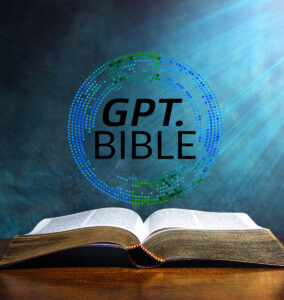Mark 11-15, Mark’s Rewritten Account of Jesus Last Week
David N. Bivin in the Jerusalem Perspective article Selected Examples of Rewriting in Mark’s Account of Jesus’ Last Week, documents instances where Mark’s editorial hand restructured his story. The article demonstrates that that Luke preserved a more primitive form of the account, a form that is independent of Mark’s influence. A close examination of Mark’s editorial style indicates a theological agenda influenced his writing.
The article reveals evidence of rewriting and embellishment in several passages, as follows:
- Jesus in the Temple (Mark 11:11)
- The Cursing of the Fig Tree (Mark 11:12-14)
- The Cleansing of the Temple (Mark 11:15-19)
- The Meaning of the Withered Fig Tree (Mark 11:20-25)
- Parable of the Wicked Tenants (Mark 12:1-12)
- Question Concerning the Resurrection
(Mark 12:18-27) - The Last Supper (Mark 14:22-25)
- Jesus before the Sanhedrin (Mark 14:53, 55-65)
- Jesus’ Death on the Cross (Mark 15:33-41)
Highlights of Mark’s rewriting of Jesus’ Last Week
Jesus’s Last Visit to the temple (Mark 11:11-25)
- Luke’s version of the cleansing is brief and straightforward. Matthew’s Gospel agrees with Luke’s that Jesus “cleansed” the temple immediately after his triumphal entry into Jerusalem. In contrast, Mark’s account is much more complex: Jesus entered Jerusalem and went straight to the temple. After “he had looked around at everything, as it was already late, he went out to Bethany with the twelve”. According to Mark, it was on this second visit to the temple that he “cleansed” it.
- According to Mark, Jesus drove out not only the merchants, but their customers as well. He overturned the money changers’ tables and the pigeon sellers’ chairs, even preventing the transporting of burdens in the temple. Luke only attests to the driving out of the merchants and lacks the additional embellishment. Matthew follows Mark to some degree by incorporating the added detail, apart from “even preventing the transporting of burdens in the temple”.
- Luke’s account of the cleansing in Luke 19:46-45 is brief, comprising just 25 Greek words, compared to 65 words in Mark 11:15-17.
- Mark tells the story indicating amplified aggression by Jesus as compared to Luke
- The development from Luke to Mark to Matthew to John is one of increasing violence. John, at the end of the line, finally portrays Jesus as braiding a whip, with which he drove all sheep and cattle from the temple courts, scattering the coins of the money changers and overturning their tables (John 2:13-16). The increasing violence in the progression of the Gospels of Luke, Mark, Matthew, John is an indication of Gospel chronology.
- In Luke’s account, Jesus is protesting against the commercialization of the sacred temple. However, in Mark, by not allowing anyone to carry anything through the temple, Jesus virtually shuts down the temple.
- In the Mark 11:17 quotation of Jesus’ words, the author spoils the rabbinic sophistication of Jesus’ saying. He does this by adding “for all the nations,” changing Jesus’ “It is written” to a question, “Is it not written?” and prefacing it with “And he taught.”
- Luke does not substantiate the story of the Fig tree. Scholars such as Tayler, Beare and Bultmann conjectured that the Fig Tree pericope is a literary creation of Mark that was later adopted by Matthew. It is likely, as Vincent Taylor and Rudolf Bultmann suggested, that the fig tree parable of Luke 13:6-9, gave Mark his lead to incorporate it into the story. The symbolism of the fig tree may be the leaders of the people.
- Mark’s order of presentation is: temple – fig tree – temple – fig tree. He split both stories, making the temple story almost a double cleansing. Both Matthew and Luke recorded only one visit to the temple.
- By bracketing the Cleansing of the Temple pericope with Fig. Tree pericope, Mark’s intent, appears to indicate the temple’s defilement. His presentation reveals his own editorial work. There is literary build-up in Mark’s Gospel.
- The Essenes viewed the temple as defiled, and they loathed the temple and its priests. By bracketing the cleansing with the two fig tree incidents, Mark 11:11-25 suggest a similar attitude to the temple.
Parable of the Wicked Tenants (Mark 12:1-12)
- Mark’s account, the tenants murder the son in his father’s vineyard, then throw the son’s body out of the vineyard (Mark 12:8). In Matthew and Luke’s accounts, however, the tenants throw the son out of the vineyard and then murder him (Matt. 21:39; Luke 20:15).
- In his retelling of the parable, Mark seems to have changed the parable so that instead of it being a condemnation of the temple high priests for not tithing, it became a statement about the pollution of the temple—Mark has the son killed by the tenants in the vineyard, thus defiling it. This suggests that in the authors’ eyes, the temple was already defiled.
- The essenes believed the temple had been defiled, so it appears that Mark may have been again influenced by essene beliefs.
Question concerning the Resurrection (Mark 12:18-27)
- The statement that “they no longer dared to ask him any question(s)” appears in three consecutive contexts, yet it fits only where it is placed in Luke (Luke 20:40), in the context of Jesus’ dispute with the Sadducees about the resurrection.
- Mark omitted the statement in his version of the dispute with the Sadducees, but placed it at the end of a scribe’s expansive repetition of Jesus’ words about the great commandment.
- It is significant that Matthew and Luke agree to omit Mark’s expansion, Mark 12:32-34) in reference to the greatest commandment.
- The great commandment story (Mark 12:34) is not a dispute context; therefore, it is probable that Mark has misplaced the statement.
Jesus before the Sanhedrin (Mark 14:53-65)
- According to Luke 22:63-71, Jesus was blindfolded, and Jesus’ guards, slaves of the high priest, amused themselves, by cruelly using Jesus in a children’s game. The next morning, the “assembly of the elders of the people gathered together, both chief priests and scribes.”
- In Mark 14:53-65, followed by Matthew Matt 26:59-68, this order of events is reversed, with the guessing game coming at the end of a night session of the Sanhedrin.
- Matthew’s use of Mark is more problematic because Matthew doesn’t mention guards or the blindfolding of Jesus, which makes things much more unclear.
Death on the Cross (Mark 15:33-41)
- Luke 23:46 records Jesus last words as “Father, into your hands I commit my spirit” based on Psalm 31:5.
- The words as recorded in Luke are what one would expect from a dying Jew. We see a similar statement by Stephen in Acts 7:59
- In contrast to Luke, Mark adds a despair framework where Mark portrays Jesus as being deserted first by his people, then by his disciples, including Peter, and finally, by God himself.
- Mark 15:34 states Jesus’ last words as “My God, My God, why have you forsaken me?”
- Jesus’ last words in Mark have been changed to fit the despair narrative.
- According to Luke 24:45, the tearing of the curtain occurred before Jesus’ death.
- Mark’s Gospel, followed by Matthew’s indicates that when Jesus died, “the temple curtain was torn in two from top to bottom.” (Mark 15:38)
- The change of order appears to be theologically motivated as a way of indicating that the defiled temple’s worship came to an end immediately upon Jesus’ death.
Conclusion:
Bivin provides glaring examples that indicate the text of Mark was rewritten. Rather than being original, Mark is quite innovative.
In conclusion, Bivin makes the following remarks:
“Luke’s account of Jesus’ last week is often clearer and more logical than Mark’s; however, this does not necessarily mean that Luke’s account has been reworked. Luke contains too much material that a Greek-speaking author could not create, such as Hebraisms that are non-Septuagintalisms. In addition, there are often indications that Mark’s account, when it differs from Luke’s, is theologically driven… The examples we have considered from the last week in the life of Jesus indicate that it was Mark who rewrote Luke, and not vice versa… They call for a reconsideration of the synoptic question. There is reason to believe that the “synoptic flow” is not in the direction that is commonly assumed, from Mark to Luke, but rather from Luke to Mark.
(David N. Bivin, “Selected Examples of Rewriting in Mark’s Account of Jesus’ Last Week” Jerusalem Perspective (2004))


